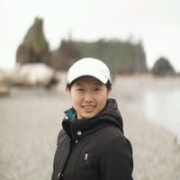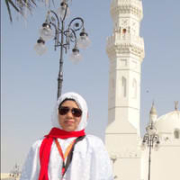

Datadog and Plixer Scrutinizer compete in the monitoring and network traffic analysis category. Datadog has a competitive edge due to its comprehensive features and ease of deployment.
Features: Datadog provides sharable dashboards, an extensive array of API integrations, and a comprehensive suite for monitoring, making infrastructure maintenance obsolete. Users highly appreciate its alert systems and anomaly detection capabilities. Plixer Scrutinizer excels in analyzing network traffic and offers unique data correlation capabilities with efficient database algorithms, providing deep insights into network performance and security.
Room for Improvement: Datadog could benefit from more granular metric control, improved real-time usage insights, and API consistency. Its pricing complexity and limited security features are also points of concern. Plixer Scrutinizer requires improvement in its update processes, configuration simplification, and visualization tools, with scalability and organizational structure management being potential development areas.
Ease of Deployment and Customer Service: Datadog's flexible deployment across cloud types makes it adaptable, though customer service and technical support experiences vary among users. Plixer Scrutinizer typically deploys on-premises, with strong customer service, although technical support can occasionally be slow despite being proactive and friendly.
Pricing and ROI: Datadog's complex billing model can lead to unexpected costs, yet many users find the features worth the expense. Plixer Scrutinizer uses a clearer licensing model based on the number of devices, providing good value, particularly for network security features. Both solutions offer ROI through enhanced performance and issue resolution capabilities, with differing pricing models.
| Product | Market Share (%) |
|---|---|
| Datadog | 3.1% |
| Plixer Scrutinizer | 0.4% |
| Other | 96.5% |


| Company Size | Count |
|---|---|
| Small Business | 78 |
| Midsize Enterprise | 42 |
| Large Enterprise | 82 |
| Company Size | Count |
|---|---|
| Small Business | 4 |
| Midsize Enterprise | 2 |
| Large Enterprise | 8 |
Datadog integrates extensive monitoring solutions with features like customizable dashboards and real-time alerting, supporting efficient system management. Its seamless integration capabilities with tools like AWS and Slack make it a critical part of cloud infrastructure monitoring.
Datadog offers centralized logging and monitoring, making troubleshooting fast and efficient. It facilitates performance tracking in cloud environments such as AWS and Azure, utilizing tools like EC2 and APM for service management. Custom metrics and alerts improve the ability to respond to issues swiftly, while real-time tools enhance system responsiveness. However, users express the need for improved query performance, a more intuitive UI, and increased integration capabilities. Concerns about the pricing model's complexity have led to calls for greater transparency and control, and additional advanced customization options are sought. Datadog's implementation requires attention to these aspects, with enhanced documentation and onboarding recommended to reduce the learning curve.
What are Datadog's Key Features?In industries like finance and technology, Datadog is implemented for its monitoring capabilities across cloud architectures. Its ability to aggregate logs and provide a unified view enhances reliability in environments demanding high performance. By leveraging real-time insights and integration with platforms like AWS and Azure, organizations in these sectors efficiently manage their cloud infrastructures, ensuring optimal performance and proactive issue resolution.
The Scrutinizer incident response system leverages network traffic analytics to provide active monitoring, visualization, and reporting of network and security incidents. The system quickly delivers the rich forensic data needed by IT professionals to support fast and efficient incident response.
We monitor all Network Monitoring Software reviews to prevent fraudulent reviews and keep review quality high. We do not post reviews by company employees or direct competitors. We validate each review for authenticity via cross-reference with LinkedIn, and personal follow-up with the reviewer when necessary.